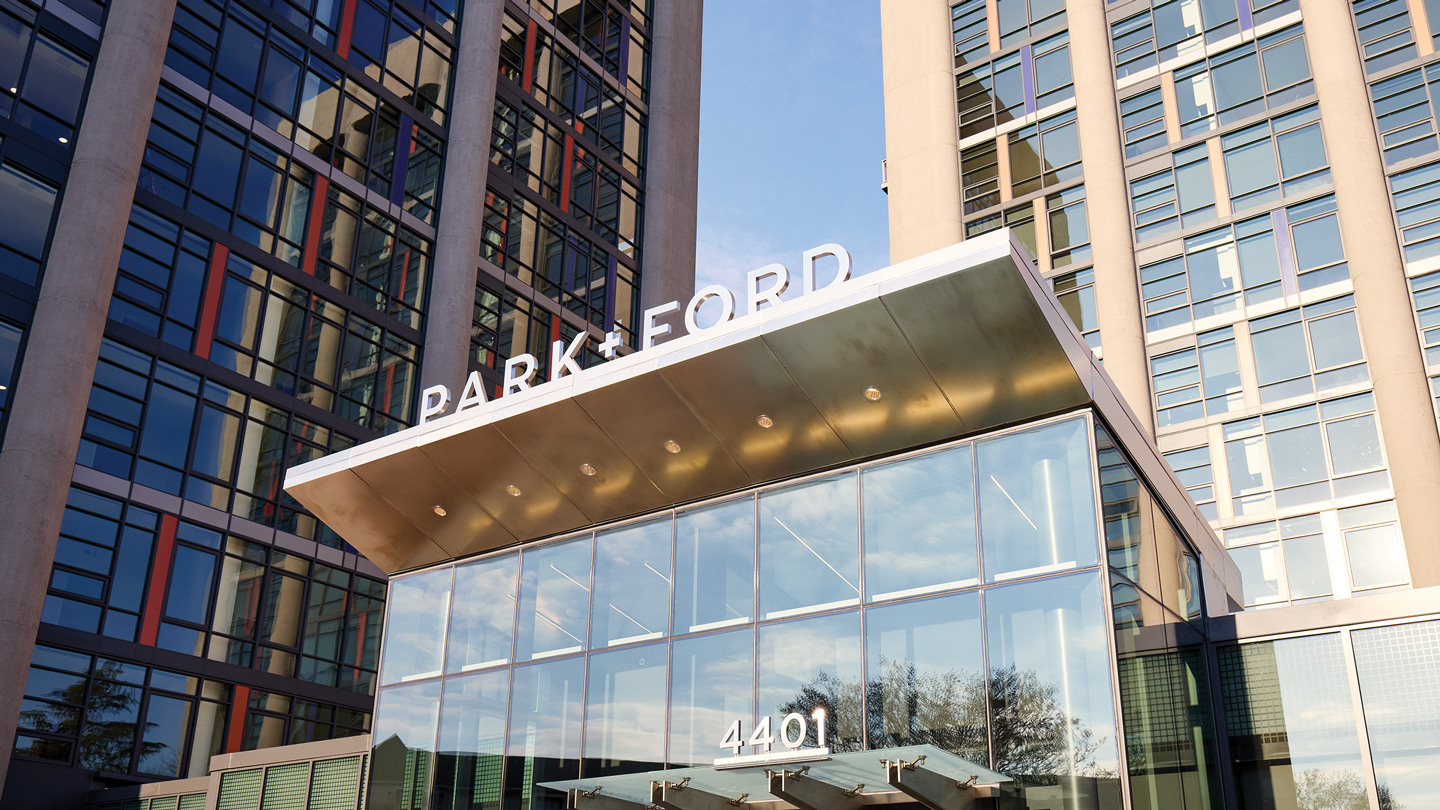Revitalization and Revenue: Office Conversions as a Way to Rebuild Cities

It’s not a panacea, but reuse can inject life into business districts.
The post-pandemic media landscape is full of headlines about the changing office market and the effects of remote work on the economy. This is happening as urban areas across the nation face an affordable-housing crisis. Office-to-residential conversions are a frequently discussed solution to the problem.
Converting offices to residential uses is not a new concept. According to a 2020 study by RentCafe, nearly 2,000 buildings have been transformed into apartments throughout the U.S. during the past 70 years — and 800 in the past decade alone. While there are obstacles to office-to-residential conversions, analyzing pre- and post-pandemic projects can identify paths for future conversions.
Benefits of Conversions
The Real Estate Board of New York estimates that approximately 20 million square feet of New York City office space could be transformed into 14,000 apartments under current regulations. Additionally, a study commissioned by New York City Mayor Eric Adams determined that 136 million square feet of office space could be converted if regulations were lifted that limit office conversions to buildings constructed after the 1960s. Similar surpluses exist in Dallas, San Francisco, Philadelphia and Chicago, as well as Washington, D.C., and nearby communities in Northern Virginia. Meanwhile, 49% of Americans say that affordable housing is a major issue in their communities, according to an October 2021 survey by the Pew Research Center.
Office-to-residential conversions also provide an opportunity to transform largely vacant buildings in central business districts into active, 24/7 communities while providing tax revenues to local municipalities. When offices are fully occupied, the employees support local retailers, including restaurants, gyms and dry cleaners. Without office workers, transit-rich central business districts can become downtrodden, with a proliferation of abandoned storefronts and empty buildings.
Lastly, as billions of dollars in loans come due, office-to-residential conversions provide a potential revenue stream for buildings that no longer attract tenants. The Mortgage Bankers Association estimates that $92 billion in office loans will mature in 2023, and another $58 billion in 2024. If a loan modification allows for a mostly empty office to be retrofitted to residential use, both the bank and owner could benefit.
Key Considerations
Office-to-residential conversions typically fall under state and local regulations, including zoning, building codes and fire codes. Before beginning, developers must assess legal and practical considerations.
Light, air and code-mandated egress. Traditional urban office buildings have large, open floorplates and perimeter windows. This creates an obstacle for residential design, as most urban areas — including New York City — have legal requirements for sufficient light and air in occupied space. Additionally, under New York State’s Multiple Dwelling Law (MDL), a bedroom must have an operable window to allow for escape in the event of a fire or other emergency. This creates an obstacle for office-to-residential conversions because it requires either substantial structural renovations to create an inner courtyard through the building floorplate, or the creation of open-unit layouts in a loft configuration.
Some developers have solved this issue by focusing on converting older office buildings with smaller floorplates and operable windows. For example, Macklowe Properties, the developer of the recently converted 1 Wall Street in Manhattan, created 566 condominiums ranging from studios to four-bedroom units by constructing bedrooms and great rooms along the building’s perimeter and placing hallways and bathrooms in interior areas.
Alternatively, developers can create large, loft-style apartments that have home offices or mezzanines within the unit instead of legal bedrooms. This is a popular conversion design in older offices with taller floor-to-ceiling heights.
To simplify the conversion process, municipalities should consider amending existing laws related to light and air. New York’s current MDL was enacted in the early 1900s, when tenements were unregulated, and disease ran rampant due to poor ventilation and air circulation. With modern-day advances in HVAC and artificial lighting, jurisdictions could consider building-code updates that allow for living and sleeping spaces that don’t have traditional sources of light and air.
Creating livable communities through zoning regulations. In suburban areas and smaller cities, antiquated zoning regulations allow for sprawling office complexes with copious surface parking while excluding residential and related retail uses. Municipalities and developers alike need to consider if the surrounding area will be attractive to residents. Are there grocery stores, transit routes, restaurants, parks and other amenities that residents would want?
Municipalities should conduct proactive, comprehensive rezonings of underutilized spaces or those with “zombie” buildings. For example, several years ago, Harrison, New York, about 22 miles north of Manhattan, rezoned a vacant office complex built in the 1970s. Then, in 2017, Toll Brothers demolished the two office buildings to create a 421-unit luxury multifamily project. To allow the project to go forward, Harrison added a zoning amendment to permit residential conversions along the Interstate 287 corridor. As part of this rezoning, Harrison allowed for a mix of retail uses nearby. The Toll Brothers development is now adjacent to a Lifetime Fitness complex and a Wegmans grocery store, creating a desirable residential community with amenities to serve the residential population.
Municipalities should review when tax incentives for large corporations are expiring and consider whether areas should be proactively rezoned to address a change in local needs.
If local zoning allows for conversion, or if discretionary approval is feasible, owners should consider if a building’s legal framework allows for conversion. For example, if the building is a commercial condominium, can a unit owner unilaterally convert the space, or must all the other unit owners vote on it? Are there use restrictions within the condominium declaration? How will a conversion affect common elements? Conversion will probably require amendments to the condominium documents.
Additionally, owners must consider if the building can be vacated in a cost-effective manner. How much space is currently leased and what are the renewal rights of existing tenants, or the rights of the landlord to move the existing tenants within the building?
The recent Park + Ford office-to-residential conversion in Alexandria, Virginia, featured in Development’s Spring 2022 issue, shows how to successfully navigate this challenge. The project features two 14-story buildings. One was mostly occupied by a single tenant. The other was occupied by 22 tenants. According to the article, the developer, Lowe, negotiated a lease extension to keep that solo tenant in one building until its space was ready at another location. Later, Lowe negotiated lease terminations with the remaining 22 tenants.
“Coupled with cash flow from the tenants in the second building, Lowe had reliable income during the predevelopment period, along with certainty that it would have one vacant building and time to work with tenants in the second tower,” according to the article.
Funding the Conversion
When it comes to creating affordable housing from office conversions, cost is often a major obstacle. According to Joseph Gyorko, director of the Zell/Lurie Real Estate Center at the University of Pennsylvania’s Wharton School of Business, it can cost $200 to $300 per square foot to retrofit an office building into residential use. Without municipal funding, most office-to-residential conversions become luxury or market-rate housing. California is attempting to tackle this problem with a municipal grant program. More than 50 developers have sought funding for $105 million in grants to convert offices to a combination of affordable and market-rate housing.
While there is no one-size-fits-all solution for office-to-residential conversions, options do exist. Developers and municipalities can look at how past projects can dictate successful future policies.
Hilary Hamburg, Esq,. is a real estate and land-use lawyer and counsel with Venable LLP in New York.
RELATED ARTICLES YOU MAY LIKE
Facility Managers Must Prepare for an All-Electric Future
Fall 2023 Issue






